Theaster Gates and the Art of Community Renewal
Good evening everyone:
I noted in an earlier note the plans underway at Marygrove for the Chicago ceramicist/community developer/community organizer Theaster Gates to be an artist-in-residence of sorts, helping build the campus’ cultural and artistic connections to the Live6 Neighborhood.
Theaster is a force of nature – an ebullient, insightful, charismatic presence who happens to be a world-class artist. His work is collected in museums around the world. His latest show, at the Gray Warehouse Gallery in Chicago, sounds some of the themes we might hear when he joins us at Marygrove.
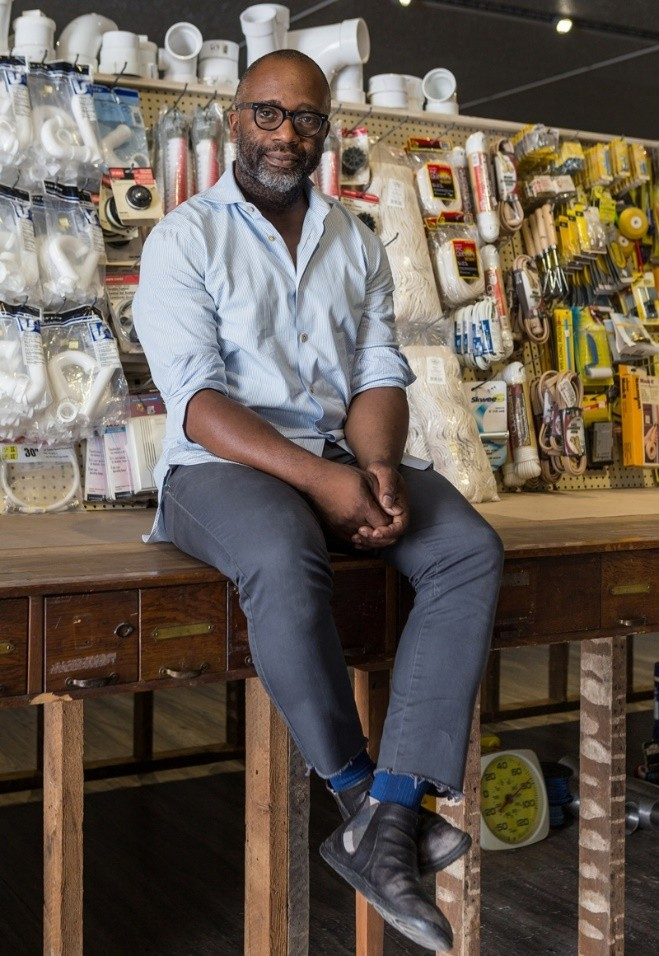
Entitled “How to Sell Hardware,” the show is rooted in Theater’s ongoing relationship with a family-owned True Value hardware store formerly located on Chicago’s South Side. The store, like so many in the Live6 neighborhood, had passed from being a central neighborhood gathering place in the 1960’s and 70’s before experiencing the same kind of decline that afflicted other neighborhood businesses.
In a poignant artist’s statement, Theaster observes: “The hardware store is the atlas. Like so many encyclopedic forms, it reminds us of a singular vocabulary, a homeland, a material sanctuary that unfortunately has its end when the form of exchange is no longer convenient.”
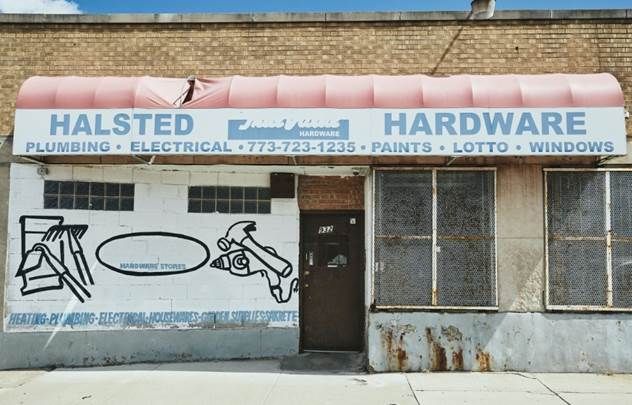
The show comprises works made of the contents of the store, which Theater purchased in 2014 when the store closed – from nuts and bolts and screws to display racks . . . from gardening fixtures and shovels and sanding belts to lighting fixtures . . . from rolls of duct tape and air pumps and spools of wire to plumbing fixtures . . . a fire extinguisher, a phone, and a cash box. Some mounted on a pegboard wall:
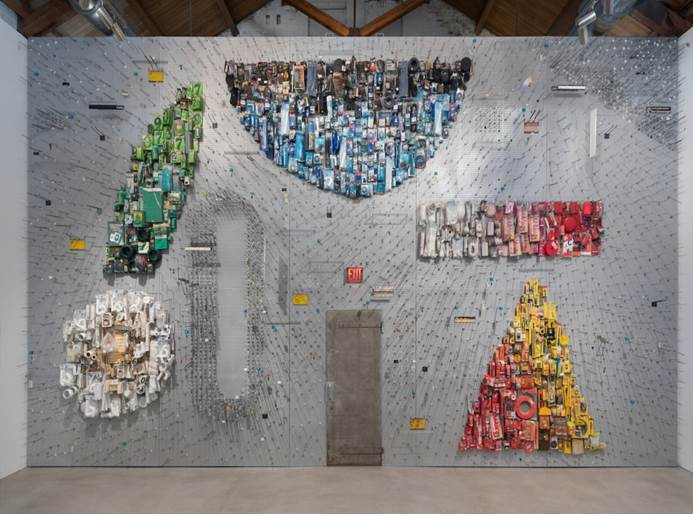

Some enclosed in 25 steel gabions:
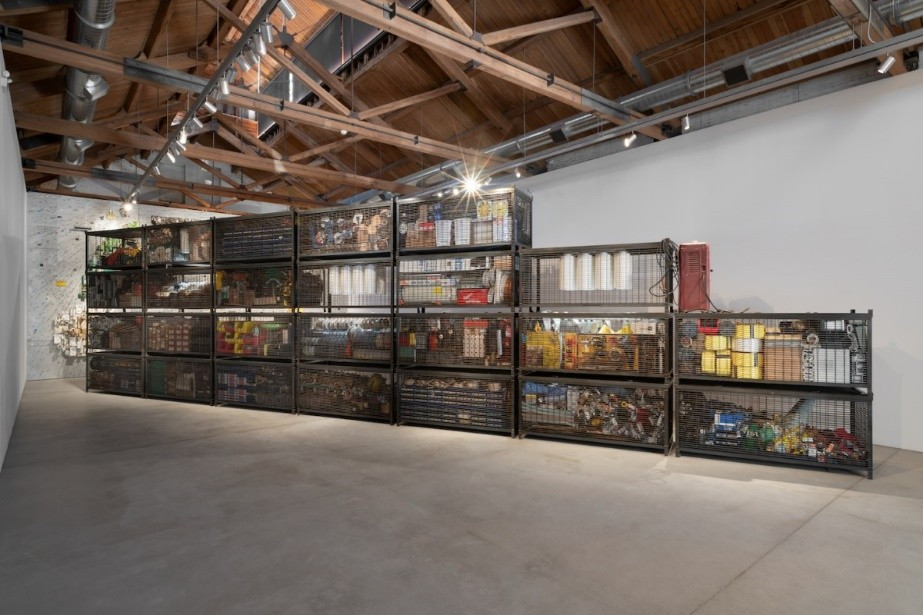
And some in classic art cases – such as a collapsible conveyor belt:
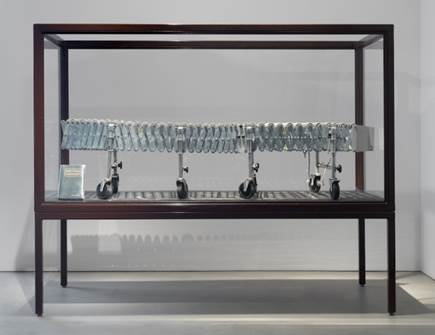
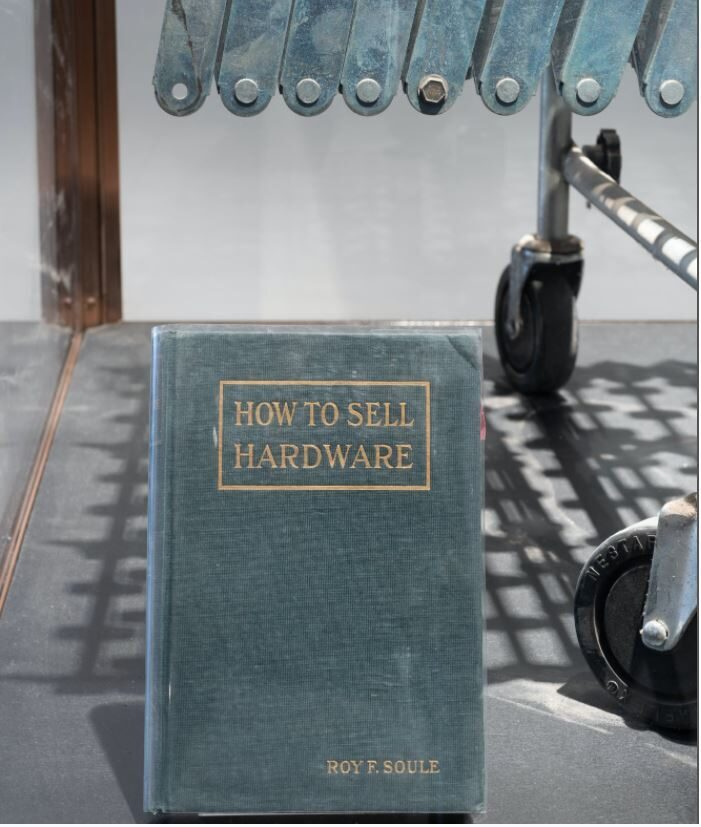
The exhibit recognizes the alchemy that occurs when labor and community join. Many of Theaster’s past works have focused on places in which people are at work in community, particularly Black people working in Black communities – barber shops, shoe-shine stands, roofers (like his father). Here, the installation reflects the sensibilities about public space that Theaster carries in all aspects of his professional life – public not in the sense of the exhibit being in the actual location of the store, but instead in the sense of it displaying retail store contents that are the stuff of day-to-day public life. And, in a direct nod to that public life, the exhibition displays signs for sale: “No Smoking,” “For Sale,” “Keep Off the Grass,” and others.
Theaster pays homage not just to the hardware store itself, but also to the vibrancy, aspirations, and self-reliance of the people who ran it, who were its customers, who were its neighbors.
I can’t wait to welcome Theaster to Detroit.
Rip